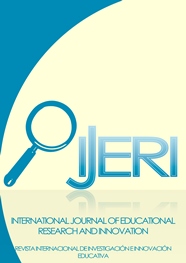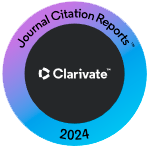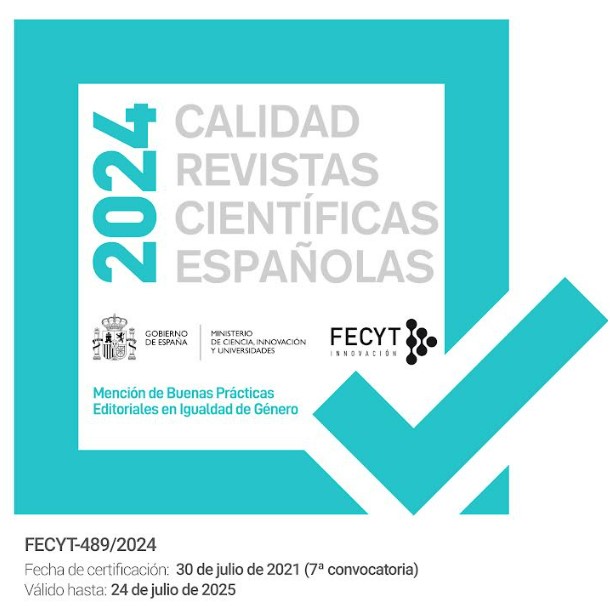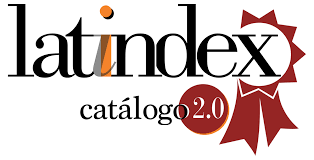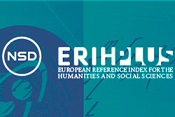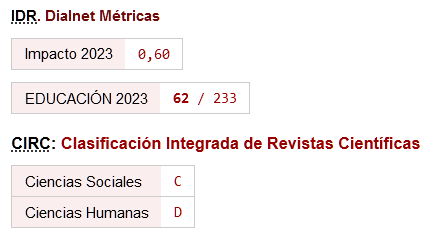Effects on academic performance in secondary students according to the use of ICT
DOI:
https://doi.org/10.46661/ijeri.4045Keywords:
ICT in education, information literacy, effective learning, multilevel analysisAbstract
The main interest of this study was to evaluate the degree of association that the use of ICT could have to school performance in mathematics, within a limited geographical area. The data was obtained thanks to the International Student Assessment Program (PISA). 1376 students from the Canary Islands participated. To obtain the best possible approximation to the phenomenon, a mixed research method was used, in which a linear hierarchical model (HLM) analysis was used to assess the characteristics of students and schools. The results reflected positive changes in school performance influenced by the effective use of ICT. It was shown that learning can be enhanced thanks to ICT, unless its use is not appropriate.
Downloads
References
Albion, P. R., Tondeur, J., Forkosh-Baruch, A., & Peeraer, J. (2015). Teachers’ professional development for ICT integration: Towards a reciprocal relationship between research and practice. Education and Information Technologies, 20(4), 655-673. https://doi.org/10.1007/s10639-015-9401-9
Alenezi, A. M. (2018). E-assessment through Tablets and Smart phones: An attitudinal assessment of teachers. IJERI: International Journal of Educational Research and Innovation, (11), 1-17. Recuperado de: https://www.upo.es/revistas/index.php/IJERI/article/view/3292
Aristovnik, A. (2012). The impact of ICT on educational performance and its efficiency in selected EU and OECD countries: a non-parametric analysis. Available at SSRN 2187482. Recuperado de: http://papers.ssrn.com/sol3/papers.cfm?abstract_id=2187482
Aristovnik, A. (2014). Development of the Information Society and Its Impact on the Education Sector in the EU: Efficiency at the Regional (NUTS 2) Level. Turkish Online Journal of Educational Technology-TOJET, 13(2), 54–60.
Baller, S., Dutta, S., & Lanvin, B. (2016). The global information technology report 2016. En World Economic Forum, Geneva (pp. 1–307). Recuperado de: http://www.aciem.org/home/images/Prensa/Newsletter/PDF_Notas_Prensa_Int_Gen_07_ Jul_2016.pdf
Baris, M. F. (2015). Future of E-Learning: Perspective of European Teachers. Eurasia Journal of MathemaTIC, Science and Technology Education, 11(2), 421-429. https://doi.org/10.12973/eurasia.2015.1361a
Belcher, J. W. (2001). Studio physics at mit. Šaltinis internete. Recuperado de: http://web. mit. edu/8.02 t/www/802TEAL3D/visualizations/resources/PhysicsNewsLetter. pdf
Braak, J. V., & Kavadias, D. (2005). The influence of social-demographic determinants on secondary school children’s computer use, experience, beliefs and competence. Technology, Pedagogy and Education, 14(1), 43-59.
https://doi.org/10.1080/14759390500200192
Breslow, L. (2010). Wrestling with pedagogical change: the TEAL initiative at MIT.
Change: The Magazine of Higher Learning, 42(5), 23–29.
Chai, C. S., Koh, J. H. L., Tsai, C.-C., & others. (2010). Facilitating preservice teachers’ development of technological, pedagogical, and content knowledge (TPACK). Educational Technology & Society, 13(4), 63–73.
Cinganotto, L., Panzavolta, S., Garista, P., Guasti, L., & Dourmashkin, P. (2016). TEAL as an innovative teaching model Insights from «Educational Avant-Garde» Movement in Italy. Journal of e-Learning and Knowledge Society, 12(2), 115-126.
Clark, R. C., & Mayer, R. E. (2016). E-learning and the science of instruction: proven guidelines for consumers and designers of multimedia learning (Fourth edition). Hoboken, New Jersey: Wiley.
Clark, R. E. (1994). Media will never influence learning. Educational technology research and development, 42(2), 21–29.
Cortina-Pérez, B., Gallardo-Vigil, M. Á., Jiménez-Jiménez, M. Á., & Trujillo-Torres, J. M. (2014). Digital illiteracy: a challenge for 21st century teachers / El analfabetismo digital: un reto de los docentes del siglo XXI. Cultura Y Educación, 26(2), 231-264. https://doi.org/10.1080/11356405.2014.935108
Crawford, K., Gordon, S., Nicholas, J., & Prosser, M. (1998). Qualitatively different experiences of learning mathemaTIC at university. Learning and Instruction, 8(5), 455– 468.
De Bono, E. (1967). The use of lateral thinking. London: Jonathan Cape.
Delen, E., & Bulut, O. (2011). The relationship between students’ exposure to technology and their achievement in science and math. TOJET: The Turkish Online Journal of Educational Technology, 10(3), 311-317.
Fombona Cadavieco, J., & Vázquez-Cano, E. (2017). Posibilidades de utilización de la Geolocalización y Realidad Aumentada en el ámbito educativo. Educación XX1, 20(2), 319-342. https://doi.org/10.5944/educxx1.19046
Frederick, G. R., Schweizer, H., & Lowe, R. (2006). After the in-service course: Challenges of technology integration. Computers in the Schools, 23(1-2), 73-84.
Fry, K. (2001). E-learning markets and providers: some issues and prospects. Education + Training, 43(4/5), 233-239.
Gagné, R. M., & Gagné, R. M. (1985). The conditions of learning and theory of instruction
(4th ed). New York: Holt, Rinehart and Winston.
Hox, J. J., Moerbeek, M., & van de Schoot, R. (2010). Multilevel analysis: techniques and applications. Routledge.
Jonassen, D. H. (2000). Toward a design theory of problem solving. Educational Technology Research and Development, 48(4), 63-85.
Kent, N., & Facer, K. (2004). Different worlds? A comparison of young people’s home and school ICT use. Journal of computer assisted learning, 20(6), 440–455.
Kozma, R. B. (1991). Learning with media. Review of educational research, 61(2), 179– 211.
Kozma, R. B. (2003). Global perspectives. Learning & Leading with Technology, 31(2), 6.
Kuhlemeier, H., & Hemker, B. (2007). The impact of computer use at home on students’ Internet skills. Computers & Education, 49(2), 460-480. https://doi.org/10.1016/j.compedu.2005.10.004
Lauman, D. J. (2000). Student Home Computer Use: A Review of the Literature. Journal of Research on Computing in Education, 33(2), 196-203. https://doi.org/10.1080/08886504.2000.10782309
Lei, J., & Zhao, Y. (2007). Technology uses and student achievement: A longitudinal study. Computers & Education, 49(2), 284-296. https://doi.org/10.1016/j.compedu.2005.06.013
Levin, T., & Wadmany, R. (2006). Teachers’ beliefs and practices in technology-based classrooms: A developmental view. Journal of Research on Technology in Education, 39(2), 157–181.
Li, Q., & Ma, X. (2010). A Meta-analysis of the Effects of Computer Technology on School Students’ MathemaTIC Learning. Educational Psychology Review, 22(3), 215-243. https://doi.org/10.1007/s10648-010-9125-8
Liu, H. C., & Yen, J. R. (2014). Effects of Distance Learning on Learning Effectiveness. EURASIA Journal of MathemaTIC, Science & Technology Education, 10(6), 575-580. https://doi.org/10.12973/eurasia.2014.1218a
López-Gil, M., & Bernal Bravo, C. (2018). El perfil del profesorado en la Sociedad Red: reflexiones sobre la competencia digital de los y las estudiantes en Educación de la Universidad de Cádiz. IJERI: International Journal of Educational Research and Innovation, 11, 83-100. Recuperado de: https://www.upo.es/revistas/index.php/IJERI/article/view/3265
López-Pérez, M. V., Pérez-López, M. C., & Rodríguez-Ariza, L. (2011). Blended learning in higher education: Students’ perceptions and their relation to outcomes. Computers & Education, 56(3), 818-826. https://doi.org/10.1016/j.compedu.2010.10.023
Lu, Z., Hou, L., & Huang, X. (2010). A research on a student-centred teaching model in an ICT-based English audio-video speaking class. International Journal of Education and Development using Information and Communication Technology, 6(3), 101.
Mayer, R. E. (2003). The promise of multimedia learning: using the same instructional design methods across different media. Learning and Instruction, 13(2), 125-139. https://doi.org/10.1016/S0959-4752(02)00016-6
Mayer, R. E. (2010). Learning with technology. En H. Dumont, D. Istance, F. Benavides, & OECD (Eds.), The nature of learning: using research to inspire practice (pp. 179-198). Paris: OECD.
McMahon, G. (2009). Critical thinking and ICT integration in a Western Australian secondary school. Educational Technology & Society, 12(4), 269–281.
Moore, M. G., & Kearsley, G. (2012). Distance education: a systems view of online learning (3rd ed). Belmont, CA: Wadsworth Cengage Learning.
Mumtaz, S. (2000). Factors affecting teachers’ use of information and communications technology: a review of the literature. Journal of Information Technology for Teacher Education, 9(3), 319-342. https://doi.org/10.1080/14759390000200096
Oana, C., & Carmen, C. (2014). What do PISA 2012 results tell us about European students’ ICT access, ICT use and ICT attitudes? ADLRO. Recuperado de: https://doi.org/10.12753/2066-026X-14-064
OECD. (2010). PISA 2009 Results: What Students Know and Can Do. OECD Publishing. Recuperado de: http://www.oecd-ilibrary.org/education/pisa-2009-results-what-students- know-and-can-do_9789264091450-en
OECD (Ed.). (2015). Students, computers and learning: making the connection. Paris: OECD.
Orton-Johnson, K. (2009). ‘I’ve stuck to the path I’m afraid’: exploring student non-use of blended learning. British Journal of Educational Technology, 40(5), 837-847. https://doi.org/10.1111/j.1467-8535.2008.00860.x
Papanastasiou, E. C., Zembylas, M., & Vrasidas, C. (2003). Can computer use hurt science achievement? The USA results from PISA. Journal of science education and technology, 12(3), 325–332.
Passey, D., Rogers, C., Machell, J., McHugh, G., & Allaway, D. (2004). The motivational effect of ICT on pupils. Department of Educational Research.
Rodríguez-Gutiérrez, P., Muñoz-Fernández, G. A., & Luque-Vílchez, M. (2018). Estudio exploratorio sobre el panorama actual de la formación inicial del profesorado de secundaria en España. IJERI: International Journal of Educational Research and Innovation, (11), 169-184. Recuperado de: https://www.upo.es/revistas/index.php/IJERI/article/view/2808
Sayans-Jiménez, P., Vázquez-Cano, E., & Bernal-Bravo, C. (2018). Influence of family wealth on student reading performance in PISA. Revista de Educación, 380, 129-155. doi: 10.4438/1988-592X-RE-2017-380-375.
Sampieri, R. H., Collado, C., & Lucio, P. (2014). Metodología de la investigación. D.F: McGraw-Hill Education.
Sánchez, J. J. C., & Alemán, E. C. (2011). Teachers’ opinion survey on the use of ICT tools to support attendance-based teaching. Computers & Education, 56(3), 911-915.
Sevillano, M.ª L., & Vázquez-Cano, E. (2015). The impact of digital mobile devices in Higher Education. Educational Technology & Society, 18(1), 106-118.
Simonson, M. R. (Ed.). (2012). Teaching and learning at a distance: foundations of distance education (5th ed). Boston: Allyn & Bacon.
Song, H.-D., & Kang, T. (2012). Evaluating the Impacts of ICT Use: A Multi-Level Analysis with Hierarchical Linear Modeling. Turkish Online Journal of Educational Technology- TOJET, 11(4), 132–140.
Sulcic, V., & Lesjak, D. (2009). E-learning and study effectiveness. The Journal of Computer Information Systems, 49(3), 40-47.
Torrecilla, F. J. M. (2012). Los modelos multinivel como herramienta para la investigación educativa. Magis. Revista Internacional de Investigación en Educación, 1(1). Recuperado de: http://revistas.javeriana.edu.co/index.php/magis/article/view/3355
Umek, L., Aristovnik, A., Tomazevic, N., & Kerzic, D. (2015). Analysis of Selected Aspects of Students’ Performance and Satisfaction in a Moodle-Based E-Learning System Environment. EURASIA Journal of MathemaTIC, Science & Technology Education, 11(6), 1495-1505. https://doi.org/10.12973/eurasia.2015.1408a
Vázquez-Cano, E. (2012). Mobile learning with Twitter to improve linguistic competence at Secondary Schools. The New Educational Review, 29(3), 134-147.
Vázquez-Cano, E. (2013). The Videoarticle: New Reporting Format in Scientific Journals and its Integration in MOOCs. Comunicar, 41, 83-91. doi: http://dx.doi.org/10.3916/C41- 2013-08
Vázquez-Cano, E. (2014). Mobile Distance learning with Smartphones and Apps in Higher Education. Educational Sciences: Theory & Practice, 14(4), 1-16. doi: 10.12738/est.2014.4.2012
Vázquez-Cano, E. (2016). Dificultades del profesorado para planificar, coordinar y evaluar competencias clave. Un análisis desde la Inspección de Educación. Revista Complutense de Educación, 27(3), 1061-1083. doi: http://dx.doi.org/10.5209/rev_RCED.2016.v27.n3.4740
Weert, T. J. van, Tatnall, A., & International Federation for Information Processing (Eds.). (2005). Information and communication technologies and real-life learning: new education for the knowledge society. New York: Springer.
Weinstein, C. E., Ridley, D. S., Dahl, T., & Weber, E. S. (1989). Helping students develop strategies for effective learning. Educational Leadership, 46(4), 17–19.
Whelan, R. (2008). Use of ICT in education in the South Pacific: findings of the Pacific eLearning Observatory. Distance Education, 29(1), 53–70.
Wittwer, J., & Senkbeil, M. (2008). Is students’ computer use at home related to their mathematical performance at school? Computers & Education, 50(4), 1558-1571. https://doi.org/10.1016/j.compedu.2007.03.001
Woessmann, L., & Fuchs, T. (2004). Computers and student learning: Bivariate and multivariate evidence on the availability and use of computers at home and at school. Recuperado de: https://papers.ssrn.com/sol3/papers.cfm?abstract_id=619101
Zhang, D. (2016). How Does ICT Use Influence Students’ Achievements in Math and Science Over Time? Evidence from PISA 2000 to 2012. EURASIA Journal of MathemaTIC, Science & Technology Education, 12(10). https://doi.org/10.12973/eurasia.2016.1297a
Zhong, Z.-J. (2011). From access to usage: The divide of self-reported digital skills among adolescents. Computers & Education, 56(3), 736-746. https://doi.org/10.1016/j.compedu.2010.10.016
Downloads
Published
How to Cite
Issue
Section
License
Copyright (c) 2019 IJERI: International Journal of Educational Research and Innovation

This work is licensed under a Creative Commons Attribution-NonCommercial-NoDerivatives 4.0 International License.

